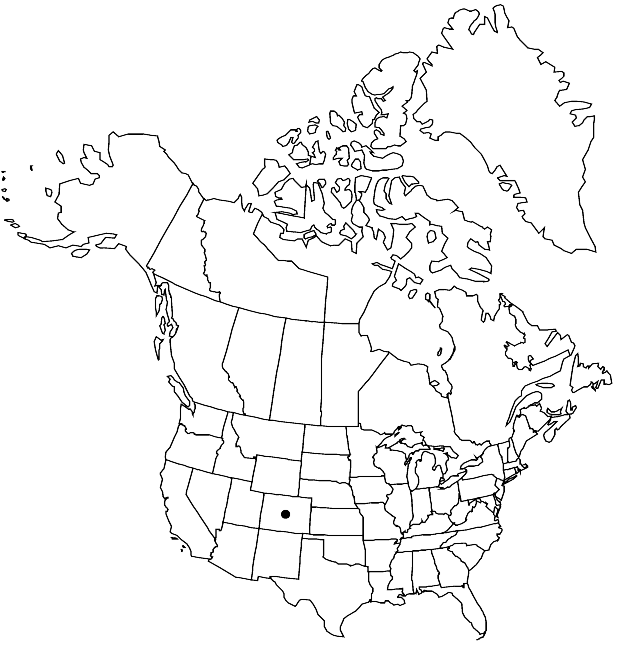Physaria vitulifera
Bull. Torrey Bot. Club 28: 278. 1901.
Perennials; caudex simple or branched, (cespitose); (silvery) pubescent throughout, trichomes several-rayed, rays furcate or bifurcate, (relatively massive, smooth to few-tubercled). Stems several from base, usually decumbent to ascending, (arising laterally, unbranched, coarse), 1–2 dm. Basal leaves: blade pandurate or obovate, 3–6 cm, margins usually deeply and broadly incised, rarely subentire, (apex obtuse). Cauline leaves: blade oblanceolate to spatulate, similar to basal, (3–6 mm wide), margins entire, (apex often somewhat acute). Racemes congested, (elongated in fruit). Fruiting pedicels (usually curving upward, sigmoid), 6–10 mm. Flowers: sepals oblong, 6–8 mm; petals spatulate, to 10 mm. Fruits didymous, irregular in shape, somewhat angular, inflated, 5–7 × 6–8 mm, (papery, often rigid, base obtuse or truncate, apical sinus broad, open and deep); valves (retaining seeds after dehiscence), pubescent, trichomes spreading, loose; replum oblong, often constricted, as wide as or wider than fruit, apex obtuse; ovules 4 per ovary; style 5–7 mm. Seeds flattened. 2n = 8, 16.
Phenology: Flowering Apr–Jun.
Habitat: Rocky hillsides, dry banks, gravel and sand, granitic slopes, soil scree, red shale
Elevation: 1600-3000 m
Discussion
Selected References
None.
Lower Taxa
No values specified."not" is not a number. "elongated" is not a number."thick" is not a number."dm" is not declared as a valid unit of measurement for this property.
